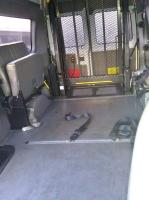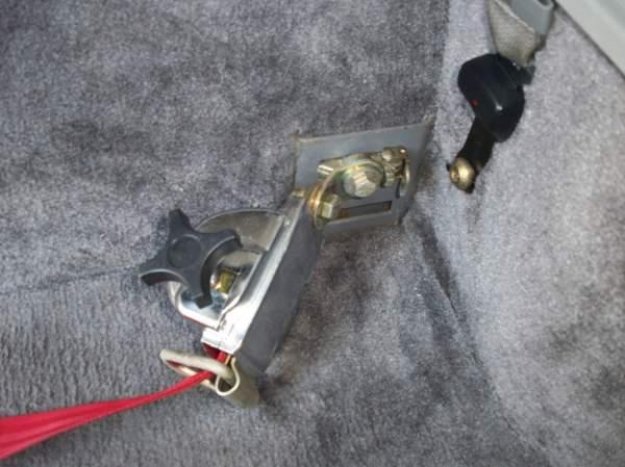Why Manual Tie-Downs Retain Their Popularity
Moving a wheelchair within a vehicle poses a few different challenges. One of the most visible is finding the best way to get the chair and its user into the vehicle. This challenge has led to the creation of countless different ramps and lifts to make the process more manageable. Once the chair is in the van, the user must address the second stage of the process–securing the chair.
 Wheelchairs do not just “sit” inside the vehicle. That would be a wildly unsafe situation. The chair could tip over completely with a turn, could bounce uncontrollably in response to poor road conditions and would otherwise skid and roll about unsafely, regardless of the quality of the chair’s brakes.
Wheelchairs do not just “sit” inside the vehicle. That would be a wildly unsafe situation. The chair could tip over completely with a turn, could bounce uncontrollably in response to poor road conditions and would otherwise skid and roll about unsafely, regardless of the quality of the chair’s brakes.
There are many different ways to secure a chair within a wheelchair ramp or other handicap-accessible vehicle. The simplest and still most common method of restraint involves the use of manual tie-downs.
These are straps that connect to the chair itself and then to hard-mounted brackets on the floor of the van. They are put in place by the wheelchair user’s helper and are then tightened until the chair is safely immobilized.
Manual tie-downs retain their popularity for a few different reasons.
- First, they are quite simple to operate. They are intuitive and rarely pose much confusion for those using them. Even first-time users of manual tie-downs rarely have any problems.
- Second, they are inexpensive. Compared to other methods of securing a wheelchair, manual tie-downs are downright cheap. That makes them very popular with those on a budget and with vehicle owners who may not always find them transporting wheelchair users.
- Third, manual tie-downs are effective. When used correctly, they will properly secure a wheelchair for vehicular travel.
If you are not interested in manual tie-downs, you can always invest in electric tie-downs. These work in a manner similar to the manual tie-downs. The difference is that the tightening process is managed via an electric motor. Alternatively, one could invest in a docking system. In these arrangements, a special base is added to the bottom of the wheelchair. It can be lined up with, and inserted into, a locking dock mechanism that will keep the chair stable.
While those options may be a bit more attractive than manual tie-downs in some ways, they are no more effective than the cheaper option. You can safely secure a wheelchair in your van using manual tie-downs.
















